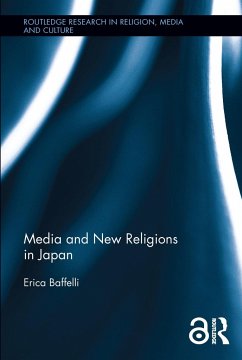The history of Japanese New Religions (shinshukyo), since the late Nineteenth Century, has been strongly influenced by the development of the media and by the image strategies associated with them. The focus of this book is the media narratives created by Japanese New Religions in order to proselytize, communicate with members, and (re)create their image. A great deal of scholarly attention has been devoted to how the media deal with religion and how religion is performed and expressed in the context of the media. However, most research on religion and media in Japan has focused on media representations of religions. In this book, author Erica Baffelli develops a framework to analyze the interaction of media and religion in the context of Japanese New Religions. In particular, the analysis of the way that religion is 'done' in the context of media implies a re-discussion of classical definitions of ritual, charisma, and communitas. In the context of Japanese New Religions, this volume introduces the concept of shinhatsubai ('new sale') often used in Japan as an advertising slogan for 'latest and newest' products. The notion of shinhatsubai is here used as a descriptive term for Japanese New Religions' constant image changes and attempts to be attractive.
Japanese "new religions" (shinsh¿ky¿) have used various media forms for training, communicating with members, presenting their messages, reinforcing or protecting the image of the leader, and, potentially, attracting converts. In this book the complex and dual relationship between media and new religions is investigated by looking at the tensions groups face between the need for visibility and the risks of facing attacks and criticism through media.
Japanese "new religions" (shinsh¿ky¿) have used various media forms for training, communicating with members, presenting their messages, reinforcing or protecting the image of the leader, and, potentially, attracting converts. In this book the complex and dual relationship between media and new religions is investigated by looking at the tensions groups face between the need for visibility and the risks of facing attacks and criticism through media.








